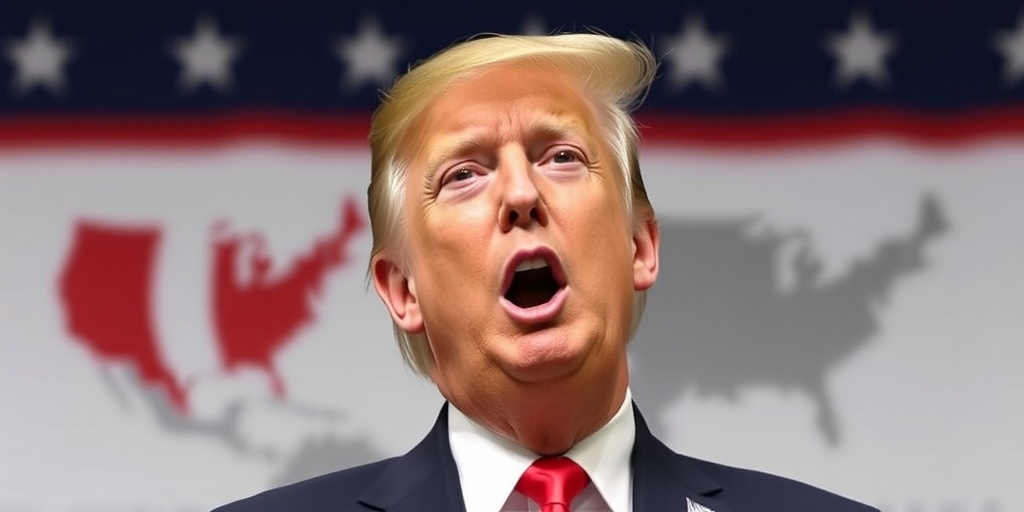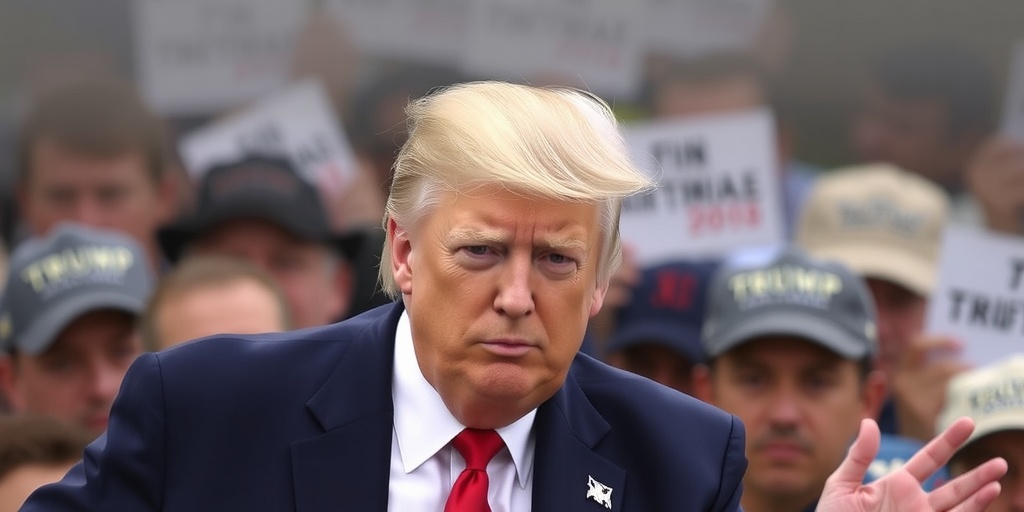Now Reading: Trump Advocates for Swift Reopening of North American Trade Deal
-
01
Trump Advocates for Swift Reopening of North American Trade Deal
Trump Advocates for Swift Reopening of North American Trade Deal

Trump Administration Aims for Early Renegotiation of U.S.-Mexico-Canada Trade Agreement
The Trump administration has made it clear that it plans to pursue an early renegotiation of the United States-Mexico-Canada Agreement (USMCA). This move comes ahead of a mandated review set for July 1, 2026, where the three nations are required to hold a "joint review" of the trade terms. Sources familiar with the discussions have revealed that these plans are motivated by a desire to bolster auto manufacturing jobs in the United States and to counteract the growing influence of Chinese companies in the Mexican automotive industry.
Signed into effect by President Trump in 2020, the USMCA was intended to modernize the existing North American Free Trade Agreement (NAFTA). However, officials within the Trump administration are advocating for immediate negotiations rather than waiting for the six-year review period. A key focus of these negotiations will be to enhance the rules surrounding the automotive sector. The administration is particularly concerned about preventing factories from relocating outside the U.S. and inhibiting Chinese auto parts manufacturers from using Mexican facilities as a gateway to the American market.
In a recent statement, Trump indicated a more aggressive stance toward trade with both Canada and Mexico, even going so far as to threaten the imposition of a 25 percent tariff on imports from these nations. His rationale for this potential tariff includes claims that both countries are not effectively managing the flow of illegal drugs and migrants into the United States. During a speech from the Oval Office shortly after his inauguration, Trump announced his intention to implement these tariffs by February 1, which has raised concerns among Canadian and Mexican officials.
Compounding the situation, Trump administration officials are alleging that Mexico has been in violation of agreements related to metal exports to the U.S. They are adamant about reinforcing their stance toward the Mexican government to demonstrate that the U.S. will take measures against such violations. Previous reports indicated that early renegotiations were in motion as the Wall Street Journal cited Trump’s push to modify the North American trade deal well ahead of the set timeline.
Canada and Mexico initially expressed a preference for waiting the full six years before revisiting the terms of the deal, anticipating a potential change in U.S. leadership that might shift trade policies. However, this window will now fall directly into the hands of Donald Trump, who has a long-standing history of criticizing NAFTA and advocating for stricter trade terms designed to protect American jobs.
One major adjustment made under the USMCA was the increase in the percentage of vehicle content that must originate from North America to qualify for zero tariffs. Additionally, the deal emphasizes the use of North American steel and mandates higher wages for workers in the auto industry. Despite these changes, there are concerns within Trump’s inner circle that these provisions have not sufficiently deterred manufacturers from moving operations outside the U.S. Furthermore, there is a growing alarm over a surge in the importation of inexpensive but high-quality Chinese vehicles and the potential establishment of Chinese auto manufacturing operations in Mexico.
During a speech at the Detroit Economic Club in October, Trump claimed, "Mexico is becoming the second China," emphasizing the threat he perceives from China’s encroachment into the North American automotive market. He expressed worry that if unchecked, these developments could result in the erosion of American car manufacturing capabilities.
It remains uncertain how far Trump is willing to go with his tariff threats—whether they are merely negotiating tactics aimed at extracting concessions from Canada and Mexico or if he genuinely intends to enact them. The Trump administration has yet to provide comments on these developments.
On his first day in office, Trump signed an executive order instructing various government agencies to review a multitude of trade-related issues. While he refrained from immediately imposing the tariffs he had threatened, the executive order signaled potential actions in the near future.
Among the provisions outlined in this order was a directive for trade officials to evaluate the USMCA’s effectiveness on American workers, farmers, and businesses, as well as to make recommendations about the U.S.’s continued participation in the agreement. Furthermore, agencies were tasked with soliciting public feedback in preparation for the upcoming reassessment of the trade deal scheduled for July 2026.
The landscape of North American trade is set to shift as the Trump administration embarks on this path, and the commitment to enhance the U.S.’s competitive position in the automotive industry could redefine the dynamics among the three neighboring countries in the near future.
Stay Informed With the Latest & Most Important News
Previous Post
Next Post
Previous Post
Next Post
-
 01New technology breakthrough has everyone talking right now
01New technology breakthrough has everyone talking right now -
 02Unbelievable life hack everyone needs to try today
02Unbelievable life hack everyone needs to try today -
 03Fascinating discovery found buried deep beneath the ocean
03Fascinating discovery found buried deep beneath the ocean -
 04Man invents genius device that solves everyday problems
04Man invents genius device that solves everyday problems -
 05Shocking discovery that changes what we know forever
05Shocking discovery that changes what we know forever -
 06Internet goes wild over celebrity’s unexpected fashion choice
06Internet goes wild over celebrity’s unexpected fashion choice -
 07Rare animal sighting stuns scientists and wildlife lovers
07Rare animal sighting stuns scientists and wildlife lovers





















